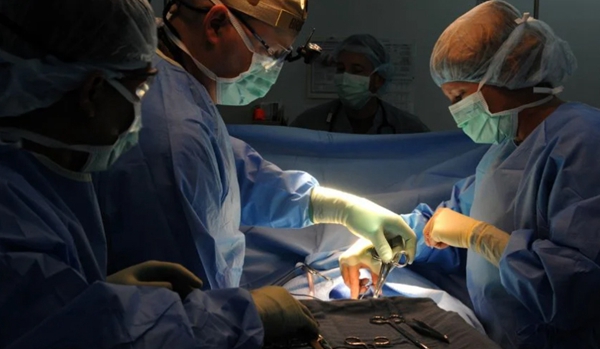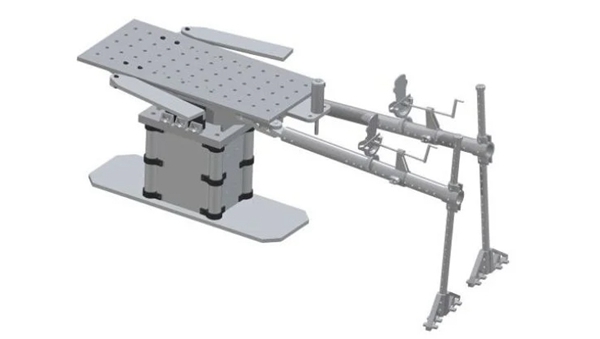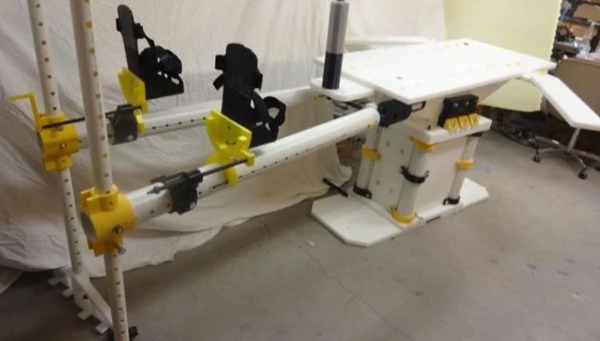20 July 2022 - Researchers at a North American university have announced the successful creation of a3D-printedsurgical table. The project, a collaboration between the University of Western Ontario (Western) and Michigan Tech, used open source 3D printing technology to ultimately produce a fully functional medical surgical platform at a fraction of the cost of conventional items.

△The healthcare industry will continue to grow in the future and operating tables are an essential core medical tool
As we all know, every piece of medical equipment is extremely expensive, no matter what type it is. in 2021, the North American operating table market alone was worth over US$456 million commercially and is expected to grow even more in the coming years. Typically, an average operating table can cost up to US$250,000 (approximately RMB 1.68 million), a price that is indeed unimaginable. So, with healthcare being one of the most basic safeguards for people's livelihoods in both developing and developed countries, expensive surgical instruments such as these can directly lead to higher treatment costs, which ultimately need to be borne indirectly by patients.
In order to make surgical instruments more affordable, as well as more readily available in countries around the world, researchers at these two universities, therefore, are pinning their hopes on 3D printing technology. As you may already know, 3D printing has proven itself to be one of the most promising alternatives to traditional manufacturing processes in many industries, as it allows for faster, cheaper and more sustainable manufacturing methods.

△3D printed surgical table model
3D printed surgical fracture table
After carefully considering what was the best way to accomplish this, the team decided to use an open source desktop 3D printer and completed the entire print job in just a little over a week. Best of all, it only cost around US$4,000 (about R26,000) to manufacture the orthopaedic procedure. This equates to a 98.5% discount compared to the normal price of 1.68 million RMB. According to John M. Thompson, Head of the Department of Information Technology and Innovation at Western University, the materials used are available worldwide. The orthopaedic table is made up of different components and can be adjusted from 35.5" to 46" in height with a tilt of +/- 15 degrees. It has a leg height that can be changed from 12 inches to 46 inches and a range of 180 degrees for both the arm support and the stand. The leg traction has a range of 21 inches and the legs can be adjusted from 55 degrees to 120 degrees.
Also, the table can be used for a wide range of orthopaedic procedures. In addition, it can be used as an ideal operating table for general surgery as well as gynaecological surgery and childbirth. Particularly for developing countries, the 3D printed operating table offers an affordable alternative to the overpriced general operating tables.

The completed 3D printed table
Joshua Pearce explains: "The cost of traditional medical devices is ridiculously high. But we can reduce their cost by, for example, helping all manufacturers to be able to make them. And, by integrating some of the innovations that we make by integrating radioactive 3D printed parts into their own designs," Pearce said." This is by no means the final form of the operating table. I'm sure that any competent engineer could make it a little better. That's exactly what we want to do, make 3D printing technology a starting point for others to achieve self-build." Antarctic Bear feels that 3D printing technology can definitely help the medical industry by bringing down the high cost of devices and having the advantage of more targeted personalisation. However, it's a long road ahead, with medical regulatory issues involved in any country. As well, it will require a series of discussions and the introduction of a series of industry regulations by some of the larger 3D printing companies, or organised sectors.





